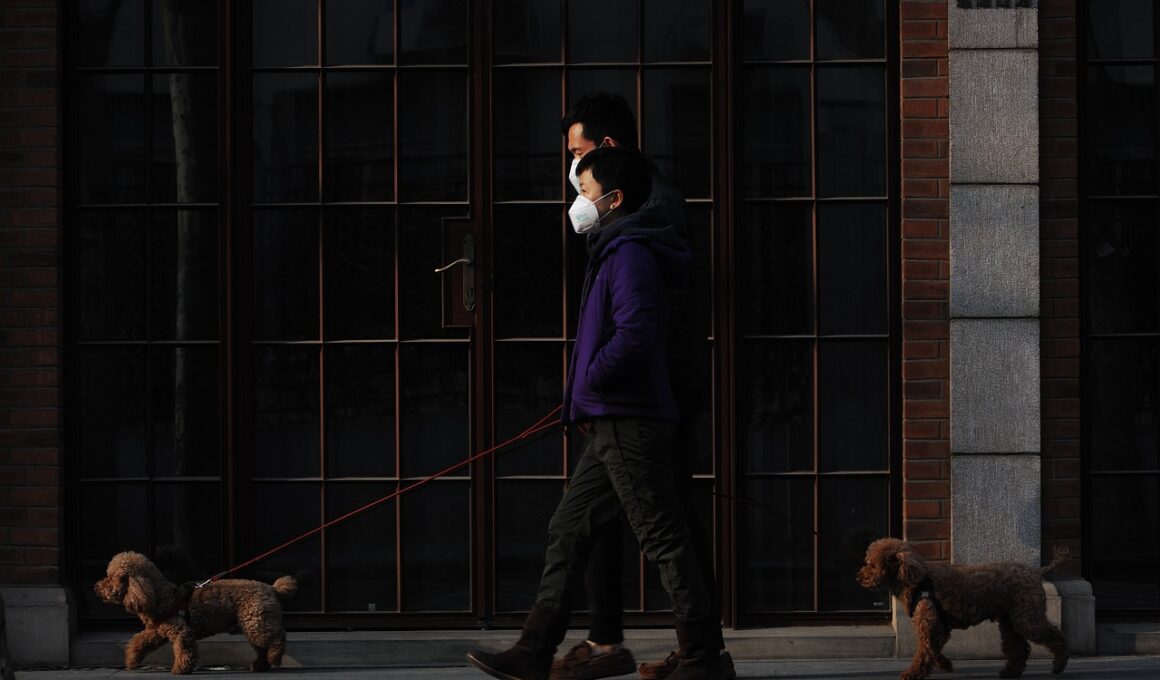Dog-Friendly Emergency Shelters: What You Need to Know
During emergencies, having a plan for your dog is crucial. Many public shelters may not accommodate pets, leaving people in difficult situations. Research local emergency shelters ahead of time to find those that allow dogs. Make sure to verify their pet policy, as some have restrictions on size or breed. Bringing your dog to a pet-friendly shelter ensures their safety during a crisis and can maintain your emotional well-being. Be aware of potential evacuation routes and the locations of nearby shelters where dogs are welcomed. Familiarize yourself with the necessary supplies you’ll need to keep your dog comfortable. For example, include food, water, leashes, and bedding. You could also assemble a pet first aid kit. By being prepared and informed, you can ensure that both you and your furry friend can weather an emergency together. Furthermore, always check that your dog has proper identification, such as a collar with tags or a microchip. This identification will be vital in reuniting you with your pet should you be separated. Thinking ahead can significantly ease the stress surrounding emergencies.
Preparing Your Dog for Emergencies
Before an emergency arises, it’s essential to prepare your dog for different scenarios. Begin with training your dog to feel comfortable in various environments. This preparation may help them adapt to new situations, including shelters. Familiarize your pet with a crate if you plan to use one during an evacuation, as this can provide them a secure space. Also, practice commands like sit, stay, and come in a calm environment, gradually introducing more distractions over time. The more experience your dog has in various environments and situations, the less anxious they might be in crisis situations. Creating an emergency kit specifically for your dog can also be extremely beneficial. This kit should include food, medications, a leash, and any other supplies your pet may need. Additionally, take some time to introduce your dog to other family members or friends who could help care for them in case of a need. While you can’t predict every emergency, enhancing your dog’s adaptability is a proactive step towards ensuring their safety. Calmness and preparedness can help in the overall handling of an unexpected situation.
Social media platforms can be valuable resources for dog owners during emergencies. Many community groups exist where valuable information shared can help during an emergency. You can also find updates on local shelters and resources aiding pets. Additionally, sharing your experiences can unite community members and promote awareness about dog-friendly emergency facilities. Be proactive in reaching out, asking questions, and sharing any valuable insights you gather. Local veterinarians could also be fantastic sources of encouragement and advice in times of need. They often have experience with emergencies and protocols to ensure pet safety. Many clinics may provide tips on preparing pets during severe weather events or national emergencies. By developing connections within your community, you can contribute to a network that prioritizes dog safety. Use local rescue organizations for advice on establishing your emergency plans. They can provide guidance and host events about preparing for crises while ensuring the safety of pets. Collaboration with others can enhance the chances of safeguarding pets during unforeseen events, ultimately leading to better outcomes for all involved.
Finding Dog-Friendly Shelters
Identifying dog-friendly shelters in advance can save time and reduce stress when you need them. Websites like FEMA and the ASPCA offer online resources to locate emergency shelters that accept pets. Before any emergency occurs, learn about those resources in your area. Consider developing a contact list with the names, addresses, and contact information of multiple shelters, as facilities may reach capacity quickly. Once you find potential shelters, take note of any specific requirements they have. For example, some might request proof of vaccinations or certain pet behavior evaluations. Having all necessary documents pre-prepared will hasten check-in processes during emergencies. Furthermore, if possible, visit these shelters ahead of time with your dog to assess their environment and gain familiarity for your pet. This exposure can reduce anxiety if you must use the facility during a crisis. Local pet adoption facilities and animal hospitals might also hold essential information on nearby shelters. Learning about available resources now can lessen the burden later. Remember that shelters can be hectic during emergencies so that prior research will ease the situation significantly.
In times of crisis, keeping your dog calm is essential for their well-being. Natural disasters or severe weather events can worry pets just as much as humans. Having familiar items from home can greatly alleviate this stress. Bring your dog’s favorite blanket, toys, or bed to provide a sense of security. Additionally, recognize that dogs can pick up on their owners’ emotions, so maintaining a calm demeanor will help your pet feel more at ease. Engage in comforting behaviors like petting or talking softly to them. When it comes to behavior management during stressful situations, distraction can be effective. Use treats, toys, or engaging interactions to shift their focus during stressful moments. Also, sometimes shelter environments can contain unfamiliar sounds and scents. Establishing a safe zone within the shelter can help. A designated area with your dog’s belongings can minimize anxiety. Reinforcing a sense of normalcy with established routines can further assist. Most importantly, be patient. An emergency can be overwhelming, and your dog may not understand the situation. Showing understanding and kindness will help both of you cope through challenging times.
Post-Emergency Care for Your Dog
After any emergency situation, evaluating your dog’s health and well-being is crucial. Begin with a thorough examination to check for injuries or signs of stress. Look for behavioral changes or issues that may have arisen due to the ordeal. If you observe any concerning signs, consult a veterinarian as soon as possible. Mental health is just as important as physical health for pets, especially after traumatic experiences. Consider incorporating calming aids such as soothing music or pheromone sprays to help them adjust back to normal life. Establishing a familiar routine for feeding, walking, and playtime can provide stability that dogs need after emergencies. It nurtures their sense of security as they transition back into their daily life. Furthermore, allowing opportunities for reformation is important. After an emotional experience, give your dog time to adapt to new environments without pressure. Reintroduce elements of regularity gradually. Ensuring your dog has opportunities to socialize with other pets may be greatly beneficial. Monitoring their behavior during these recollections will provide insights, ensuring their happiness and health as you both move forward together.
In summary, understanding and preparedness are the foundational elements that help ensure the safety of dogs in emergencies. Review local emergency shelters, prepare your pet for various scenarios, and find community support to build essential networks. Taking the time to engage with your community not only strengthens connections but fosters important partnerships focused on dog safety. Familiarizing yourself with available resources, including local veterinarians and rescue organizations, can offer invaluable support during crises. Create an emergency kit tailored to your dog’s needs and maintain an up-to-date list of dog-friendly emergency shelters. Most importantly, assess your dog’s mental and physical well-being throughout emergencies. The emotional connection between you and your dog plays a pivotal role in navigating stressful situations together. Finally, act now to prepare and reassure your furry friend before any unexpected crisis arises, ensuring that you both feel safe and supported. The more proactive you are in your planning and preparations, the better equipped you’ll be to manage tough situations. This comprehensive approach will safeguard your dog’s health and happiness in emergencies, thereby strengthening the bond you share.
Conclusion
The safety of dogs during emergencies is a crucial topic for pet owners to consider thoroughly. Preparing and planning for unpredictable scenarios can significantly reduce anxiety and hardships for both pets and their owners. Assess the local facilities ready to accept pets, educate yourself on emergency preparedness, and build a reliable network. By taking these proactive steps, you’ll contribute to creating a safer and more inclusive environment for our canine companions during challenging times. With the right tools and knowledge, you can ensure that your beloved pup remains secure and calm while you tackle the challenges affecting everyone around you. Start gathering information, sharing it with fellow dog owners, and building that vital community. The emotional and mental well-being of pets during emergencies deserves just as much attention as physical safety. Make it your priority to prioritize dog-friendly emergency solutions, allowing for resilience that carries through not only emergencies, but everyday life with pets. Stay informed, prepared, and connected, and your dog will always have the care they need in times of crisis.


